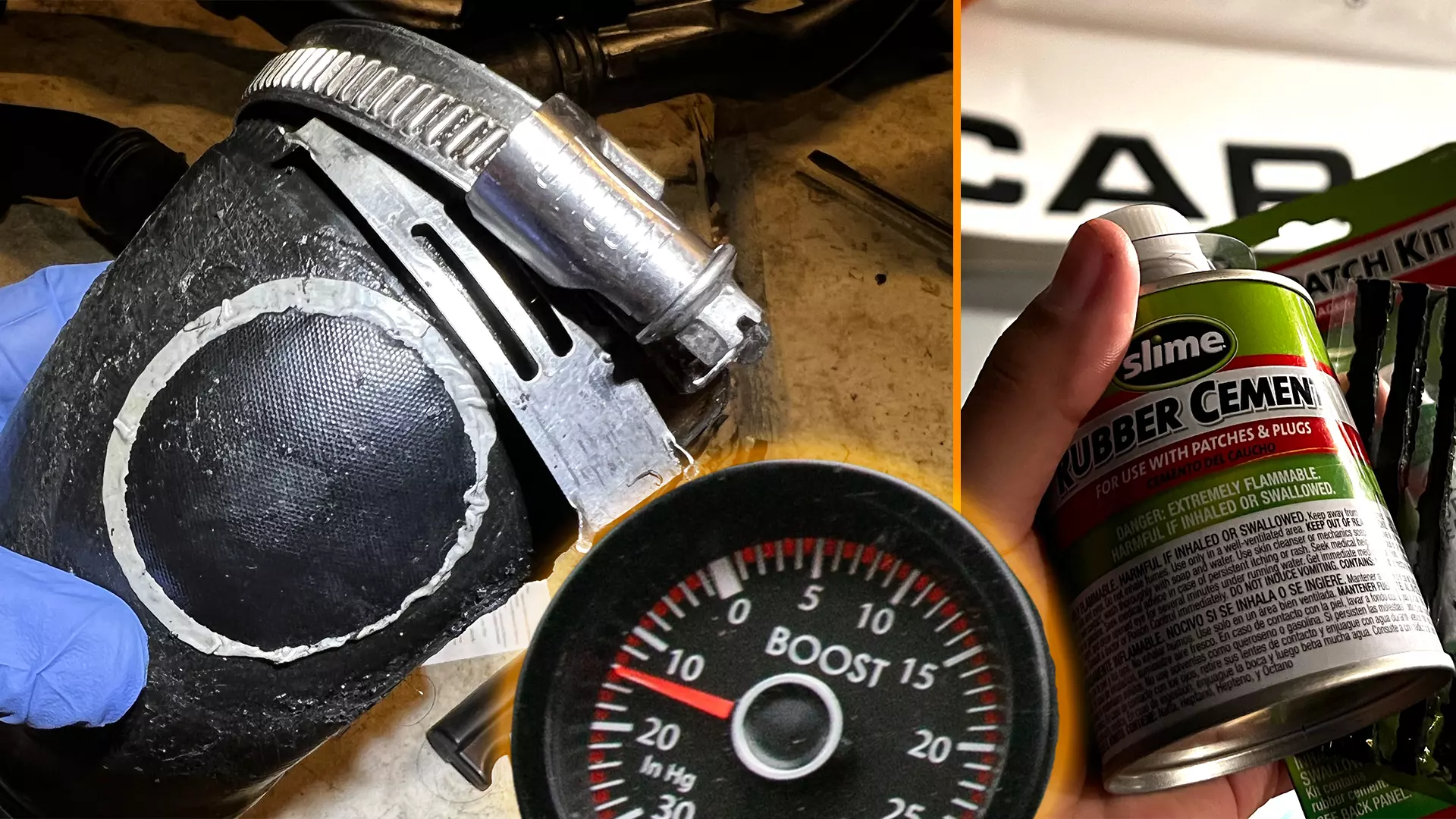My 2010 Volkswagen GTI has been having its usual round of power-diminishing, baby pacifier-waving nonsense that it does every year, on the dot. I call my beloved Volkswagen Auto Group (Volkswagen Aktiengesellschaft, VAG) front-loading washing machine Six Iron because of the implied strength in the metallic name and because it is the sixth generation of Golf. Yet somehow, after every winter I’ve owned it, things go wrong and the car stops running right. This time it’s an annoying boost leak and a crankcase pressure issue.
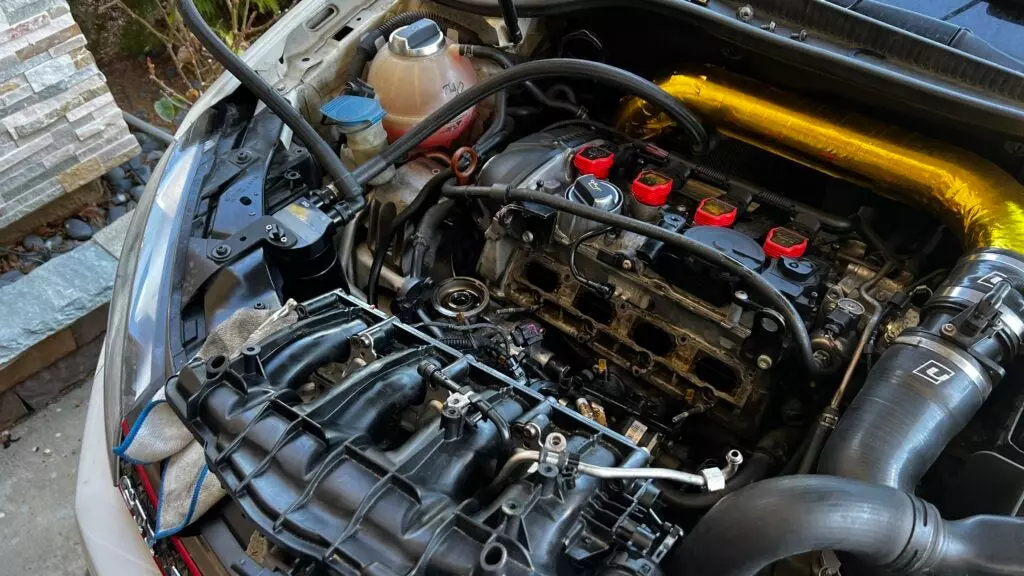
On Mk6 GTIs, the positive crankcase ventilation (PCV) valve fails in a way that leaks boost within the engine, causing blow-by and oil consumption, both of which I was experiencing. I also discovered a large cut on the rubber hose that links a plastic charge pipe and the throttle body. The PCV was an easy, albeit expensive, fix at $230 for one at a nearby dealership. The boost leak is a mercifully cheap fix at about $30, but I couldn’t find one near me, nor could I get one within a week. Thus, I decided to deploy the deepest depths of my automotive wrenching madness by trying a cheap fix using a tire patch.
For those who believe air entering engines should not be pressurized, a boost leak is when the pressurized air from the turbocharger escapes from the system through loose clamps or outright damage to the piping in between the turbo and intake port. As for the PCV, my car is a somewhat special case, where the PCV is integrated with an air-oil separator that also has to manage positive pressure from boost.
Naturally aspirated (non-turbo) engines normally operate under vacuum and close to ambient pressure under full-throttle. Turbo engine “boost” is just positive pressure. That positive pressure makes normally non-existent leaks problematic.
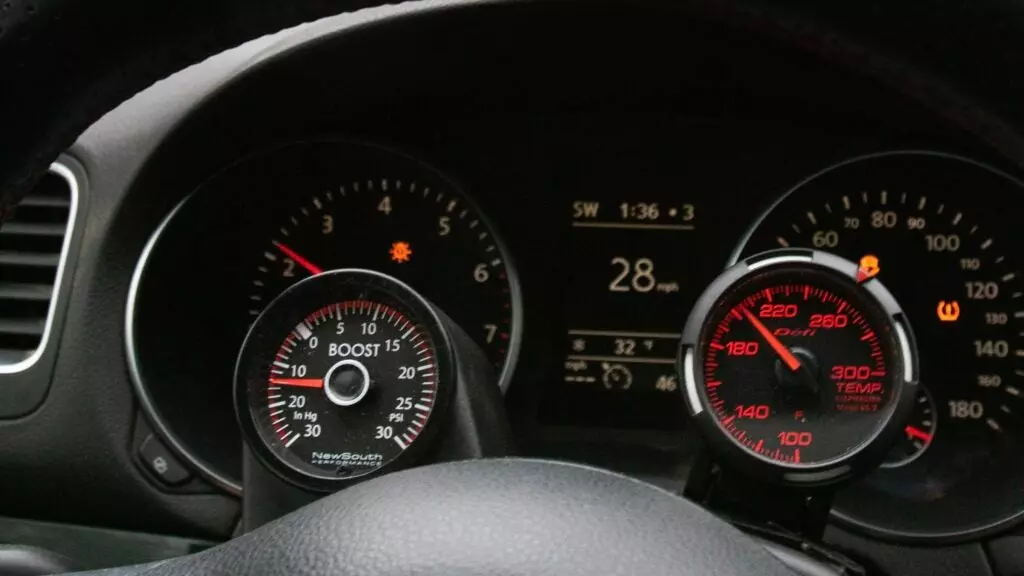
The boost leaking out basically amounts to a power leak. Not just that, the ECU doesn’t understand it’s happening most of the time, so it corrects and biases parameters like wastegate duty and fueling to achieve a boost target that it cannot hit. There is only so much the car can do to correct this, and these adjustments can cause various problems like running rich, misfires, and setting bad long-term habits within the ECU. All of them lose power. Boo.
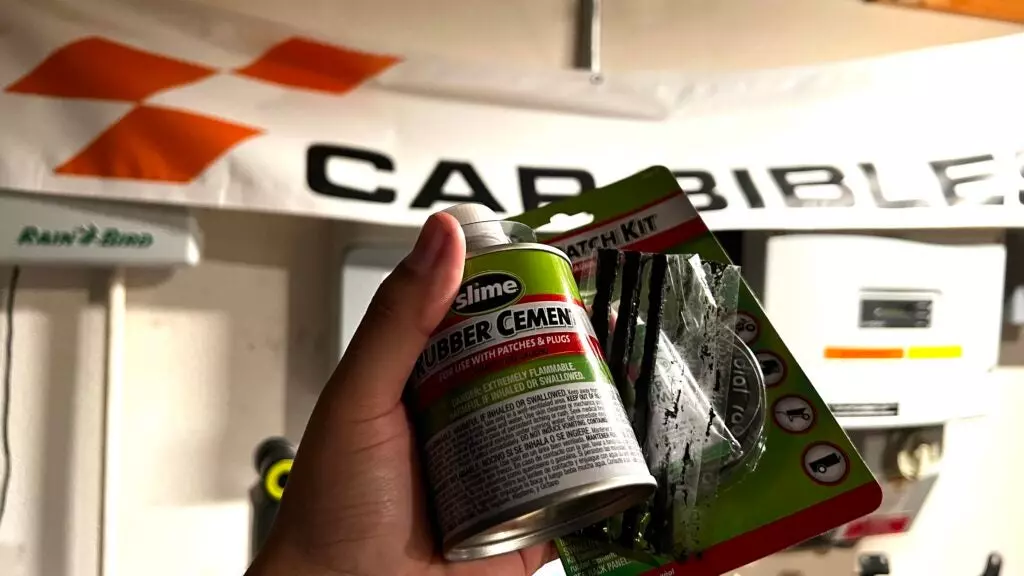
Anyways, my cheap fix is the fun part. I actually attempted two forms of tire patch: the cork and butyl string type and the round patch type. I also tried duct tape, but it didn’t work at all. I went about removing the charge pipe from the car and set it up for easy repair.
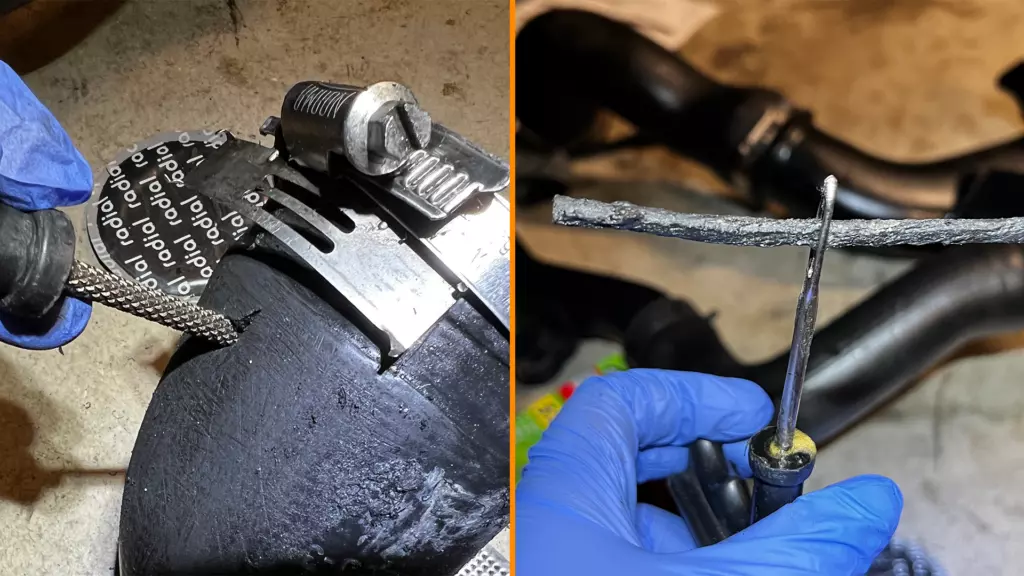
I really wanted the physical plug of the butyl string, but it did not want to stay in the relatively thin rubber of the hose. It was simply designed for the much thicker and more durable rubber and metal layers of tires.
I ditched that and got to work with the round patch. I immediately found some problems but pressed on. Mostly, it was an issue of sealing the tight radius of the hose with a patch designed for the large radius of a tire. I did my best and used extra rubber cement to seal everything up.
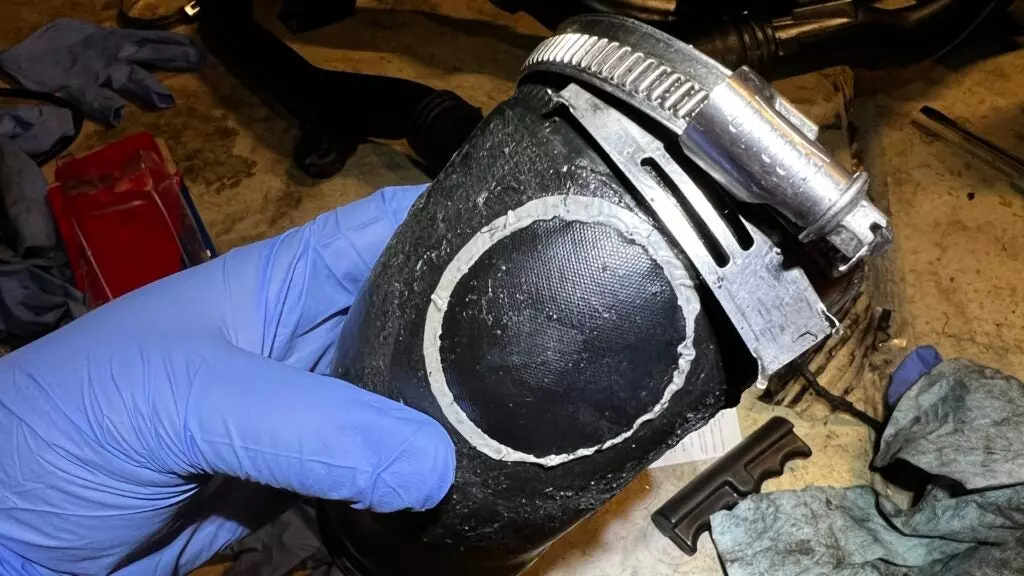
The end product should be in the hooptie wrenching hall of fame. Genuinely, I am astounded that I attempted this. I might even be a little proud. With some minor encouragement, it seems to have sealed up, certainly more than having an open wound. I rubber cemented the cut from the inside and applied the same treatment to the edges of the patch. I’m pretty sure rubber cement doesn’t work the way I’m imagining it does, but I have nothing to lose by trying.
I finalized my repair by letting it cure and giving a final sealing pass. After reinstalling it, I took it out for a drive with a fresh PCV and hopes that my fix might just work.
To my utter surprise, it kind of held. It certainly still had a boost leak, but instead of a gross air leak, it now had a distinct squelch to it of a classic ‘90s boost leak you would hear on a big-turbo Mitsubishi Lancer Evolution. More importantly, I gained a lot of my former power back and a couple of psi of boost. Where Six Iron would lazily get up to around 14 psi peak, it now rampaged to 16 psi peak before keeling over a bit due to the smaller boost leak. The APR Stage 1 software should target around 17-18 psi, so I am still leaking a bit of boost and precious horsepower. Still, it should hold until I can replace the hose completely.
The question nobody asked is answered: Yes, you can temporarily fix a boost leak with a tire patch. This is peak hooptie shit, folks.
What to read next:
- Kevin Williams writes why his EV road trips around the midwest sucked, largely due to chargers and infrastructure.
- Oops! Forza Horizon 5 misnamed an obscure Chinese car for seemingly no reason.
- This overlooked Ford could be a focal point for used Blue Oval tuning.
- Not good: It looks like NYC traffic cameras can bust you for exhaust noise now.
- Project i-MiEV update: I broke a piece of plastic, and now I have to remove a 500-pound battery.
- We have extremely pedantic observations about gauge clusters to discuss.
- To Ohio kids, LeBron James’ Hummer H2 was uniquely inspiring.
